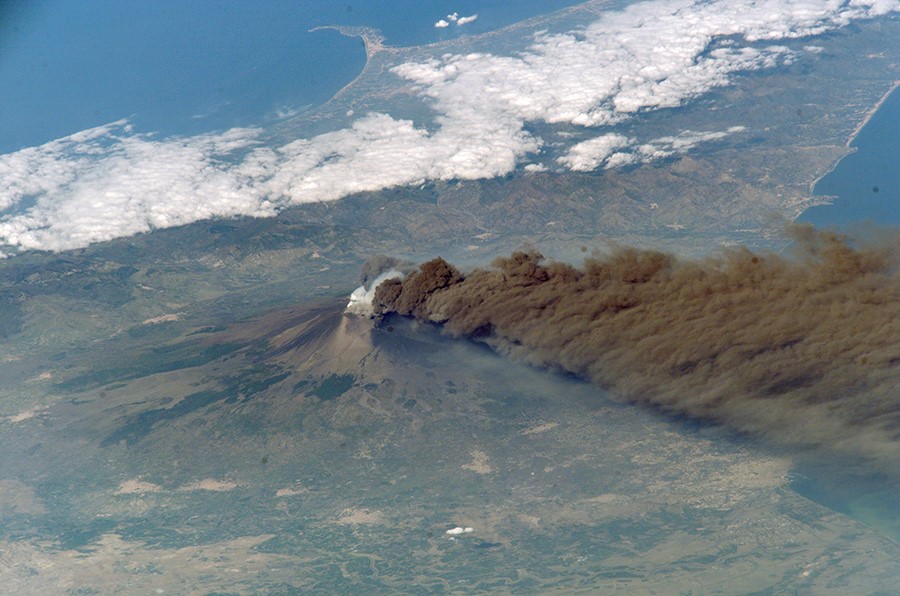The 2001 eruption saw the simultaneous presence of 5 active mouths in different areas of the volcano.
Strombolian activity
with lava flow emission has been a rather common phenomenon in the last 40 years in the south-eastern summit crater, accompanied by lava flow emission at 2800 metres above sea level on the western edge of the Valle del Bove and at 2900 metres in the Valle del Leone, as well as by a mouth at 2100 metres in the Monti Calcarazzi, which destroyed a good part of the tourist/commercial activities in the Rifugio Sapienza area.
Finally, a mouth opened up right in the viewpoint area, where there was strong Strombolian activity with intense ash. This mouth slowly built the Cratere Laghetto, which is clearly visible from the viewpoint, and caused an accumulation of almost one metre of ash in the nearby city of Catania, with serious consequences on the road network, air transport and commercial and agricultural activities in the area.
To get an idea of the amount of ash emitted and the height reached by the eruptive column, we need only consider that the ash from the Cratere Laghetto reached Greece and the northern coasts of Africa.